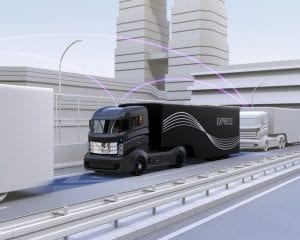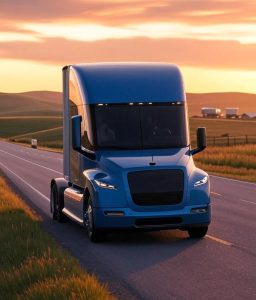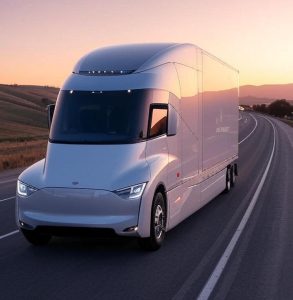
However, a lot of people are concerned about road safety when driverless vehicles are put on the road. Most individuals are particularly concerned about heavy autonomous trucks that could lead to fatal collisions. Here, we will take a look at the autonomous technology and evaluate whether these concerns hold any merit.
Autonomous Vehicles: An Overview
While autonomous vehicles are not yet widely available, numerous companies have launched pilot programs for self-driving trucks. These vehicles use a combination of sensors, cameras, radar, and software to navigate roads, avoid collisions, and follow traffic laws. The system processes real-time data to update internal maps and send instructions to actuators that control acceleration, braking, and steering.
Driverless vehicles use sensors to know about incoming traffic. Sensors also inform the car about the traffic surrounding it. The vehicles create and update an internal map using multiple sensors. For instance, the self-driving prototypes of Uber use sixty-four laser beams to create the map. Other companies have used HD cameras, radar, lasers, and even sonar to locate vehicles.
Software processes the images, and the videos are taken by the sensors to plot a path. This instruction is then sent to the actuator of the vehicle that controls acceleration, deceleration, steering, and braking. The software has collision prevention and object differentiation algorithms. The algorithm allows autonomous vehicles to follow road rules and avoid an accident.
Are Autonomous Trucks Safe?

Design Flaws
A National Transportation Safety Board report mentioned that design limitation has been a major cause of accidents involving self-driving vehicles. The present autonomous systems are not developed to detect cars turning into their path. Instead, these systems help car drivers prevent rear-end collisions.
Due to faulty sensors, dozens of deaths have been associated with self-driving vehicles. If more autonomous vehicles hit the road, the fatalities could increase significantly.
Lack of Road Infrastructure
Autonomous trucks depend on well-marked roads and consistent infrastructure. Poorly maintained pavement, faded lane markings, and road debris can cause navigational errors. Significant investment in road improvements would be necessary before widespread deployment is viable.
To ensure that the driverless trucks do not get into accidents, the roads need to be perfectly maintained. Additional funds are required to repair and maintain all the roads to prevent the risk of fatal collisions.
Faulty Assistive Safety Technologies
Driver-assist features such as automatic braking and adaptive cruise control have limitations. According to the Insurance Institute for Highway Safety, these technologies sometimes fail to prevent crashes without human intervention, especially during complex driving scenarios.

There is currently no unified federal regulation governing autonomous trucks. This regulatory vacuum allows companies to test self-driving systems on public roads with minimal oversight, creating legal uncertainty around liability in the event of an accident.
Risk of Car Hacking
Hacking is a serious risk for autonomous trucks. Any device that is connected to the net can be a target for hackers. The cars rely on an online connection to navigate through the roads. A hacker who can gain access to the central control of an driverless truck can create havoc resulting in crashes and deaths.
In addition, there is a risk of theft of private data. Hackers can gain access to a smartphone or another mobile device connected to the car’s Bluetooth. Autonomous trucks are also susceptible to computer viruses.
Software Glitches
Another danger of autonomous trucks is the possibility of a crash due to faulty software. There are about 40 to 100 computers in a driverless car. A glitch in any of the devices could result in a collision. The software can also freeze that can result in a catastrophic accident.
The Uncertainty of Driverless Big Rigs
Despite promising claims, there is limited long-term data proving the safety of autonomous trucks. Past incidents have involved vehicles failing to detect stationary objects, drifting from lanes, or braking erratically. These issues raise doubts about their readiness for full-scale deployment.
While no fatal accidents have been reported involving autonomous trucks, the outcome can be grave once a large number of trucks are on the road.
Accidents involving trucks are particularly dangerous since major truck accident cases involve serious injuries leading to permanent or temporary disability.
If you have been involved in a truck accident, you need to connect with an experienced truck accident attorney. Truck accident cases are more complex as compared to those involving car or motorcycle accidents.
Determining liability & responsibility in a truck accident is not easy because there may be several liable parties ranging from the truck manufacturer, guidance system designer, sensor manufacturer and so on. An experienced attorney will help you successfully file a case against a guilty driver and the employer. The attorney will know what evidence to collect to ensure that the guilty party is held accountable for the losses due to injuries.
